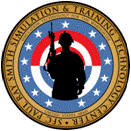|
|
MST-READI (Medical Simulation TRaining TEchnology EvAluation DesIgner) |
|||
|
|
||||
|
|
||||
|
|
||||
MST-READI offers principles and guidelines to assist in establishing an overall approach to the TEE - below are a few general consideration as you begin to prepare for and design the TEE. Start Early! Valid training evaluation requires a significant amount of preparation and planning. Begin thinking about the evaluation strategy at the training product project start. Training Evaluation is a Continuous Process TEE should be an ongoing process and should be planned for from the inception of the training system through development, implementation and system maintenance. Evaluate training device capabilities analytically in all phase of the system life-cycle. Training Evaluations should be Comprehensive & Rigorous The evaluation strategy should be as comprehensive and rigorous as possible given the constraints of the TEE situation and should employ qualitative and quantitative analytical techniques to derive information about the program under consideration. Training Evaluation should Involve Multiple Methods A range of evaluation methods, guidelines and toolkits must be made available to cope with the complexity of medical simulation training systems originating from a combination of technical as well as organizational and social issues. Every Training Evaluation is Unique Every training evaluation should be treated as unique. The Evaluation must be appropriate to the stage of system design, development and implementation. As discussed in the Evaluation Methods section there are methods that can be mapped to formative and/or summative evaluations. The evaluation must also consider Characteristics of the Simulation under assessment. Additionally, practical considerations such as the availability of participants and the skills set of the evaluation team can have a significant impact on the evaluation design and timetable.
|
||||
|
MST-READI is a collaborative research effort among US Army RDECOM-STTC, OSDi and CWS, funded by RDECOM-STTC
|
||||
